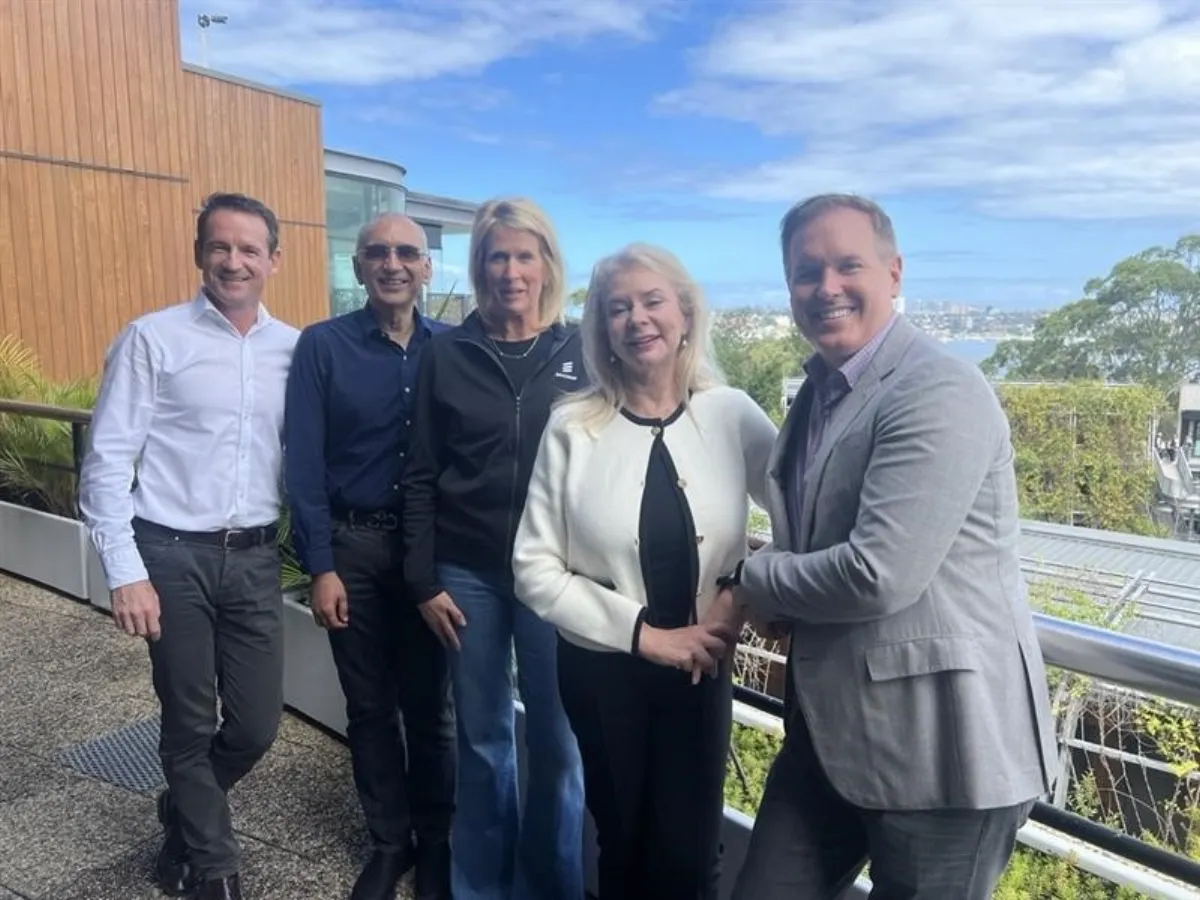Exclusive: Ericsson sharpens partner focus with new sales strategy
Ericsson's new Enterprise Wireless Solutions Chief Sales Officer, Matt Cook, says the company is undergoing a major fundamental shift towards simplicity, closer collaboration, and a stronger focus on partner success.
Speaking to TechDay in Sydney following the Asia-Pacific Partner Exchange, Cook outlined the new chapter for the 120-year-old company.
"Ericsson is built on a massive amount of history, legacy patents and technical excellence," he said. "We're now investing heavily in modernising and becoming hyper-relevant in the enterprise space."
Cook, who joined Ericsson six months ago and was appointed Chief Sales Officer in January, brings nearly three decades of experience in the industry.
His mission is clear: to enable Ericsson to "plug in pretty much any product and respond to any type of sales motion into the enterprise."
That means shifting from rigid models of selling to a more versatile approach - one that acknowledges the diverse needs of business and operational technology leaders across sectors such as retail, public safety, agriculture, mining and transportation.
"When you step back and look at the journey Ericsson is on, enterprise isn't really sold just one way," he explained.
"It's not about selling to IT or OT or the CXO layer. It's about being relevant to all of them, helping them bring these solutions to life without tech becoming a distraction."
A major part of that shift is Ericsson's evolving relationship with its partners. Where once they were brought in at the tail-end of a sale to fulfil orders, partners are now involved from the outset.
"We're bringing partners in much earlier to craft solutions and sell side by side with us," Cook said. "It's not just about delivery anymore. It's about building the solution together."
Cook offered several examples from his time in Australia. In one case, Ericsson worked with a police district alongside body camera suppliers and rugged laptop manufacturers to create a fully connected patrol car. In another, meetings with a major grocery chain, a retail property group, and a telecoms provider revealed an opportunity for the three to collaborate - an insight only made possible through Ericsson's network of partner conversations.
"What's fun is when you can sit in these meetings and start connecting the dots," he said. "That's when real innovation happens."

(L-R) Ericsson's Nathan McGregor, Pankaj Malhotra, Krissy Kelly, Lisa Guess, and Matt Cook at the company's recent Partner Exchange event in Sydney, Australia.
Cook has already begun reshaping Ericsson's partner model. Key changes include simplifying its partner program, removing outdated tier systems, and boosting registration incentives—from 5% to 15%—to maximise partner profitability.
"It was pretty cumbersome," he said. "Like many tech companies 10 to 15 years ago, it became trendy to have a complicated program with lots of modules, certifications and silos. We're done with that."
Cook drew a personal analogy to illustrate his view. "I've got two daughters. I'd never say to one, 'You're my gold-level daughter' and to the other, 'You're my silver-level daughter'. That's not how families work, and partnerships should be treated the same way."
The company's new approach was met with strong support at the Asia-Pacific Partner Exchange in Sydney, where more than 70 partners gathered.
"It was the first time I saw a group of partners stand up and applaud," Cook said. "That says a lot. They see that we're serious about their profitability and success."
The event also gave partners a sneak peek at changes that will be publicly announced at Ericsson's Global Partner Summit in Savannah, Georgia in April.
Ericsson is also investing in tools to improve the partner experience, streamlining deal registrations and making systems more accessible. "It's all about creating an experience that is profitable and easy," he added.
Another area of emphasis is building personal relationships between Ericsson's team and partner personnel.
"When we talk sales opportunities, I want to know the names of the SEs and account managers working with us," Cook said. "Sales is personal."
In terms of technology, Ericsson is looking to help its partners enable real-world AI and robotics use cases through dependable connectivity.
"We provide the networking that makes these mega trends possible," he said, citing recent examples including a retailer looking to deploy robot dogs for public safety after a tragic shooting incident. "Traditional Wi-Fi drops between access points. Our networks don't. That's the difference when lives are at stake."
The company's integrated AI platform, ANA, plays a growing role across support, optimisation and network design. "We use AI a lot," he said. "But what excites me most is how we enable it."
In Australia specifically, Cook noted a surge in interest around two enterprise wireless solutions: wireless branches for retailers facing fibre outages, and hybrid fleet connectivity that combines 5G and satellite for remote or mobile use cases. "In some places, it's literally life or death whether you have a connection," he said.
Cook also highlighted emerging demand for private 5G networks in retail and entertainment venues - not just for coverage, but for data insights and mobility.
"In Australia, it's still thought of as a coverage solution. But in other markets, it's enabling all sorts of analytics and pop-up use cases. That's coming here next."
Looking ahead, Cook said the focus is on quality over quantity. "We don't need 4,500 partners globally. We need the right 700."
He described Ericsson's partner ecosystem as broad and multifaceted, from carriers and managed service providers to resellers, consultants and OT contractors. The goal is to unify the partner experience across all types.
"We're not going to build out our own services practice," he said. "We're investing in helping our partners build those capabilities."
Asked what sets Ericsson apart from competitors, Cook responded: "the product."
"It just works. It's hyper-dependable. Turn it on, and it almost installs itself," he said. "And second, we focus on the hard stuff - the mission-critical use cases that others shy away from."
He ended on a note that sums up his vision for the company's future: "We dive deep into understanding what our customers are trying to achieve, and we help them get there."
